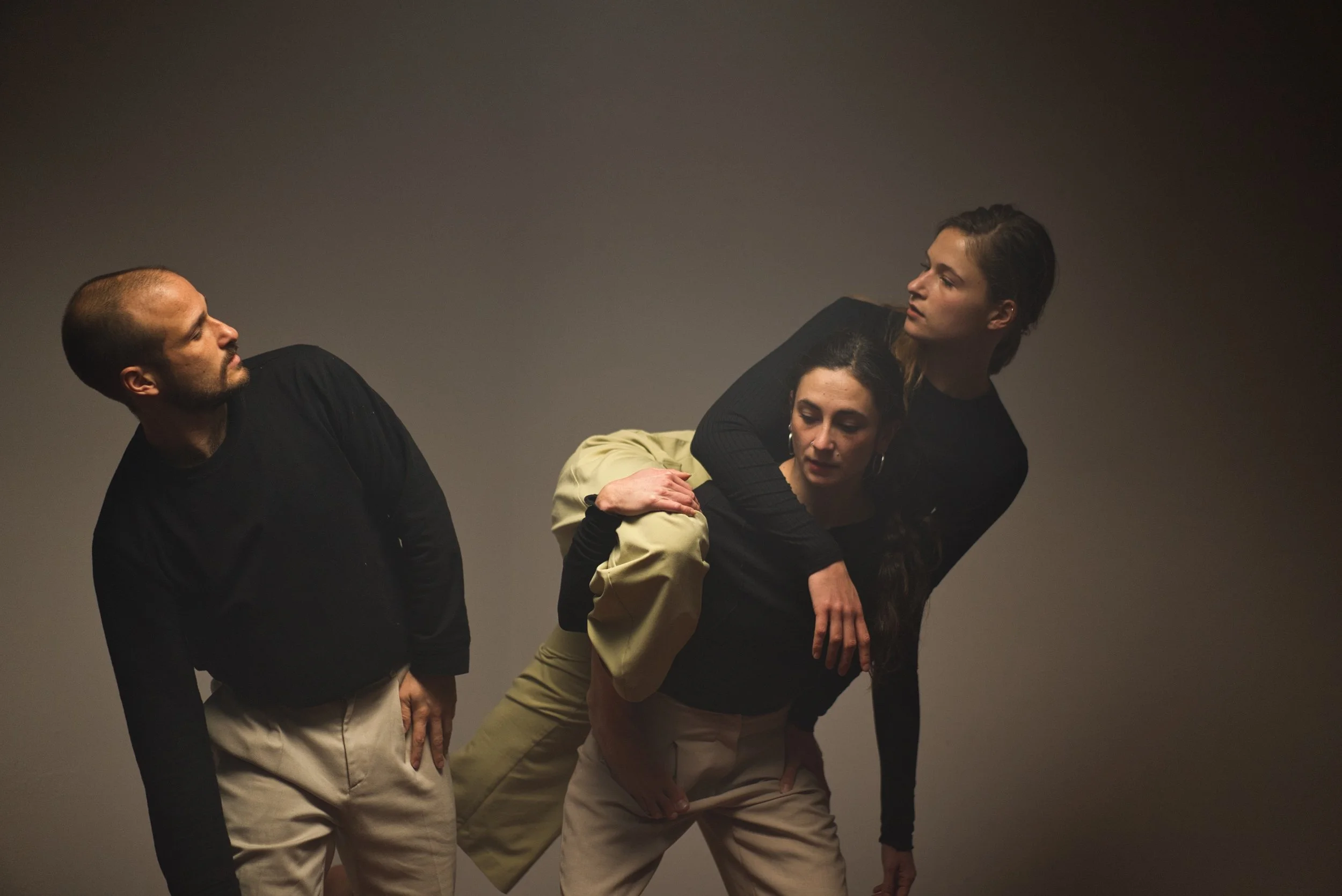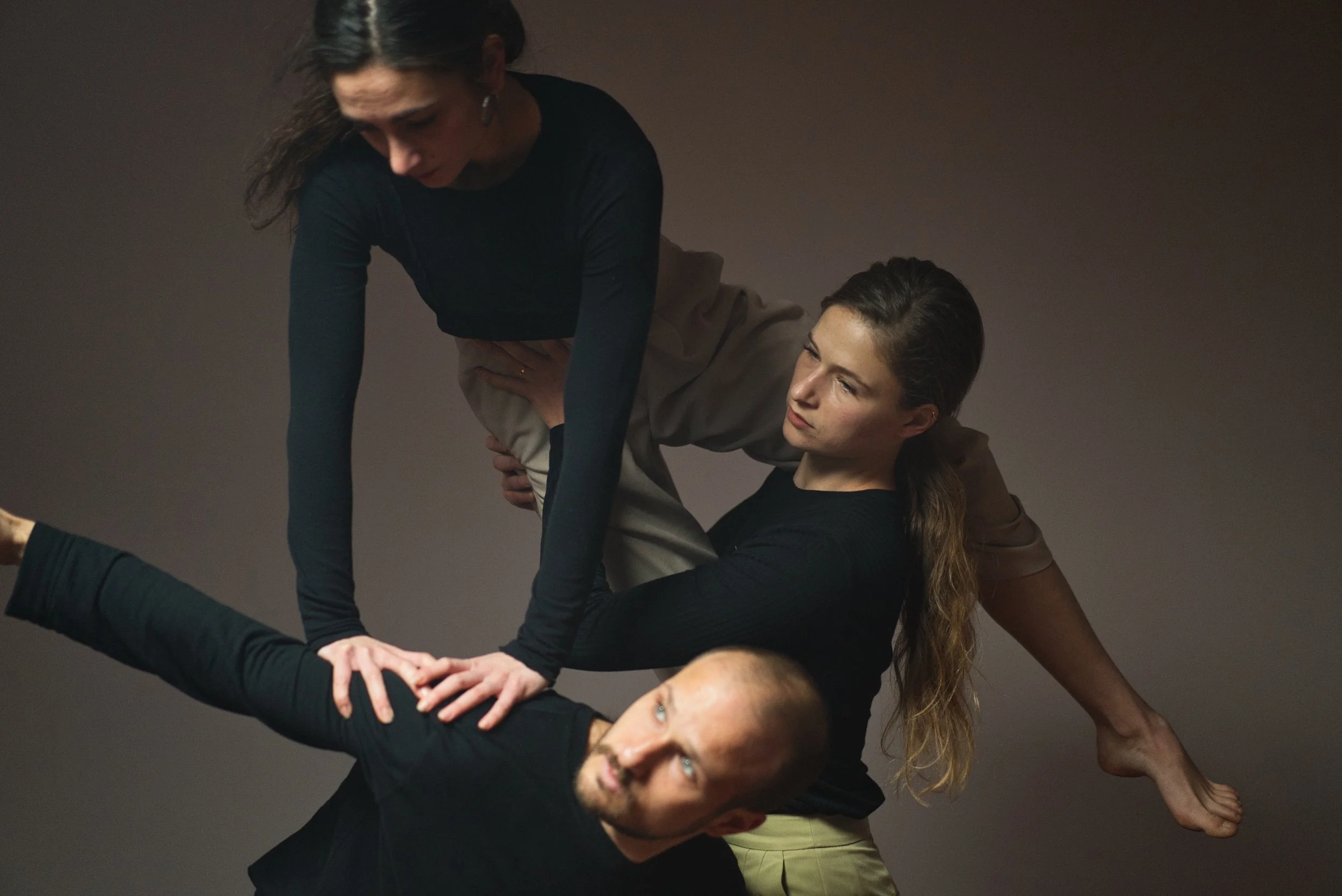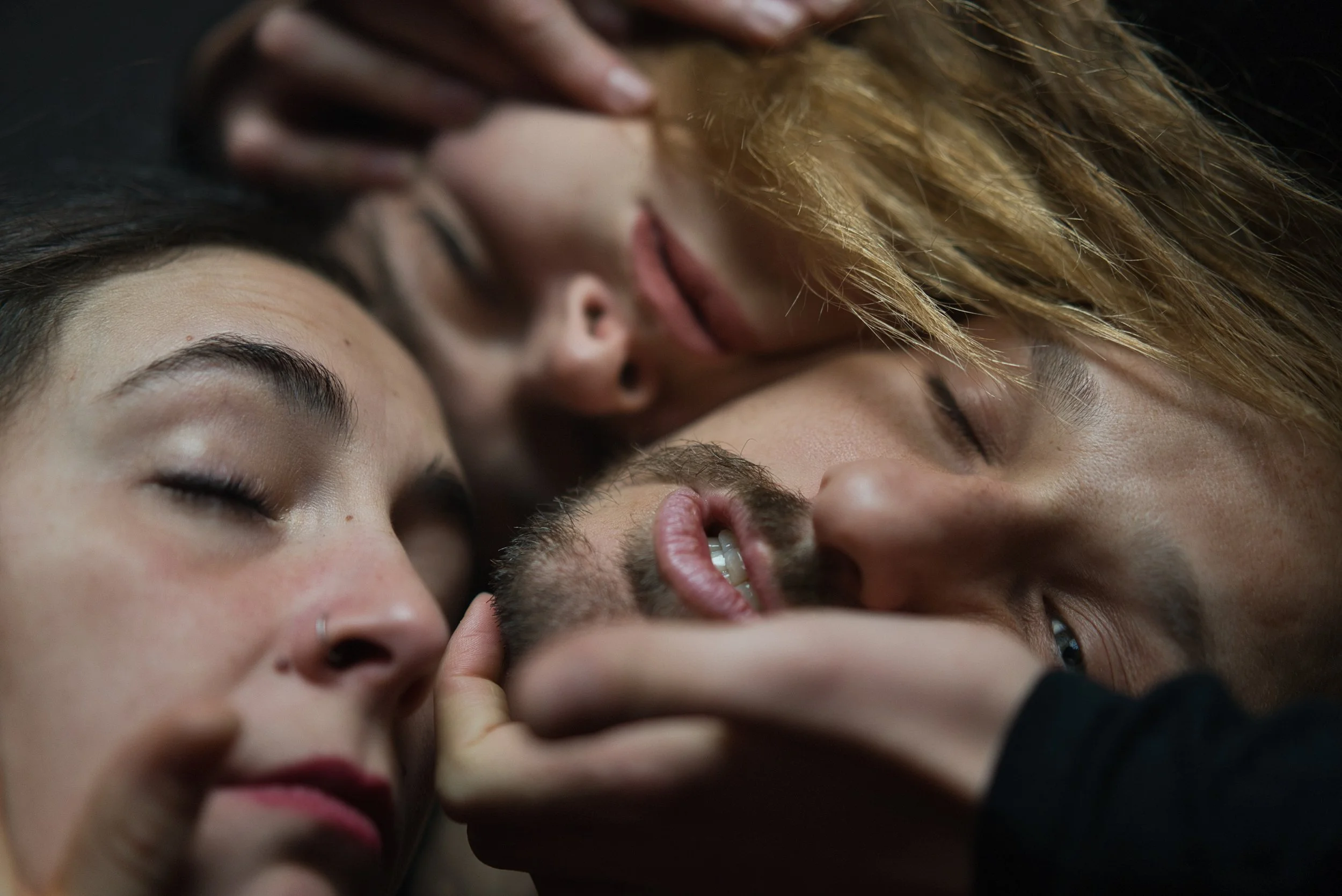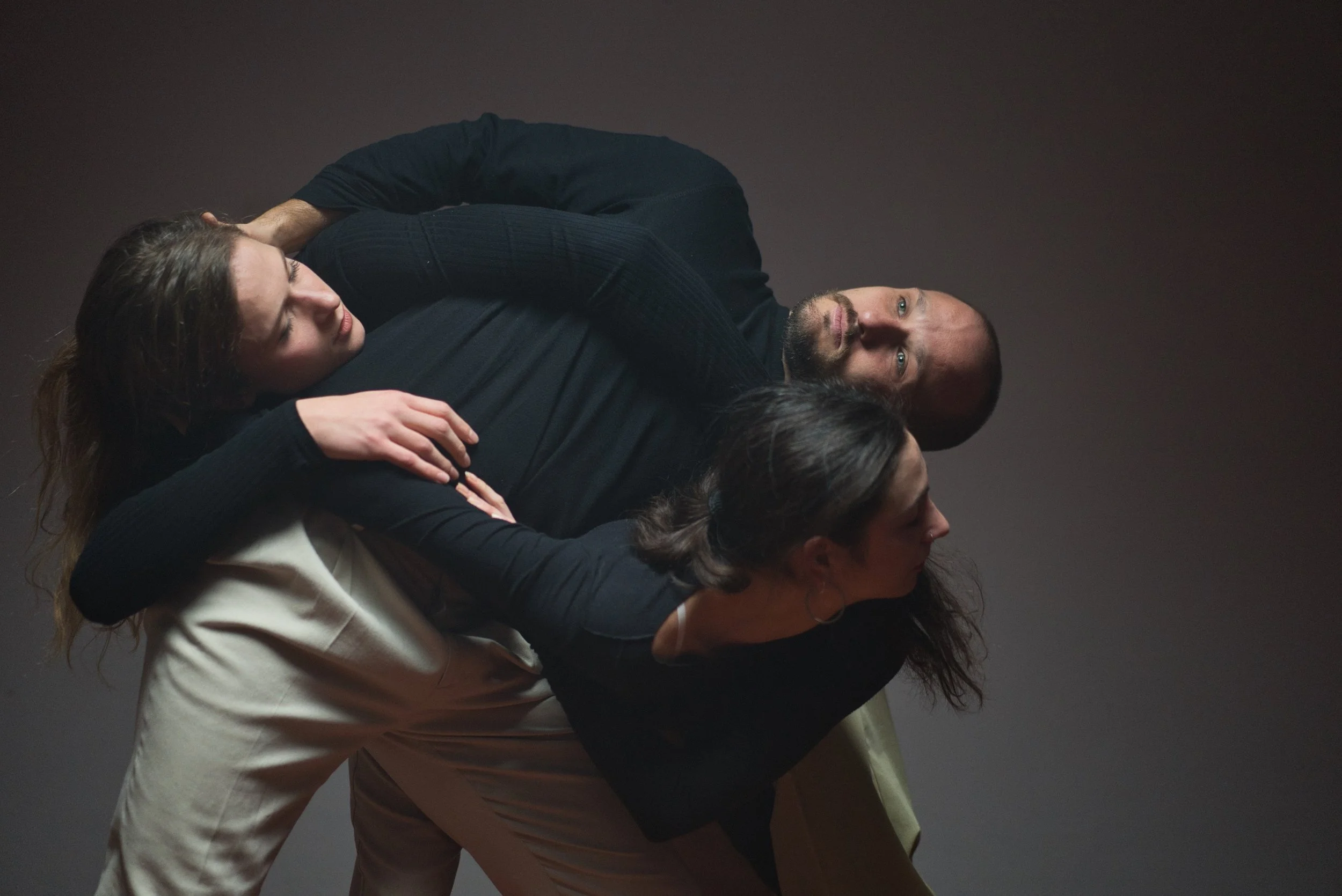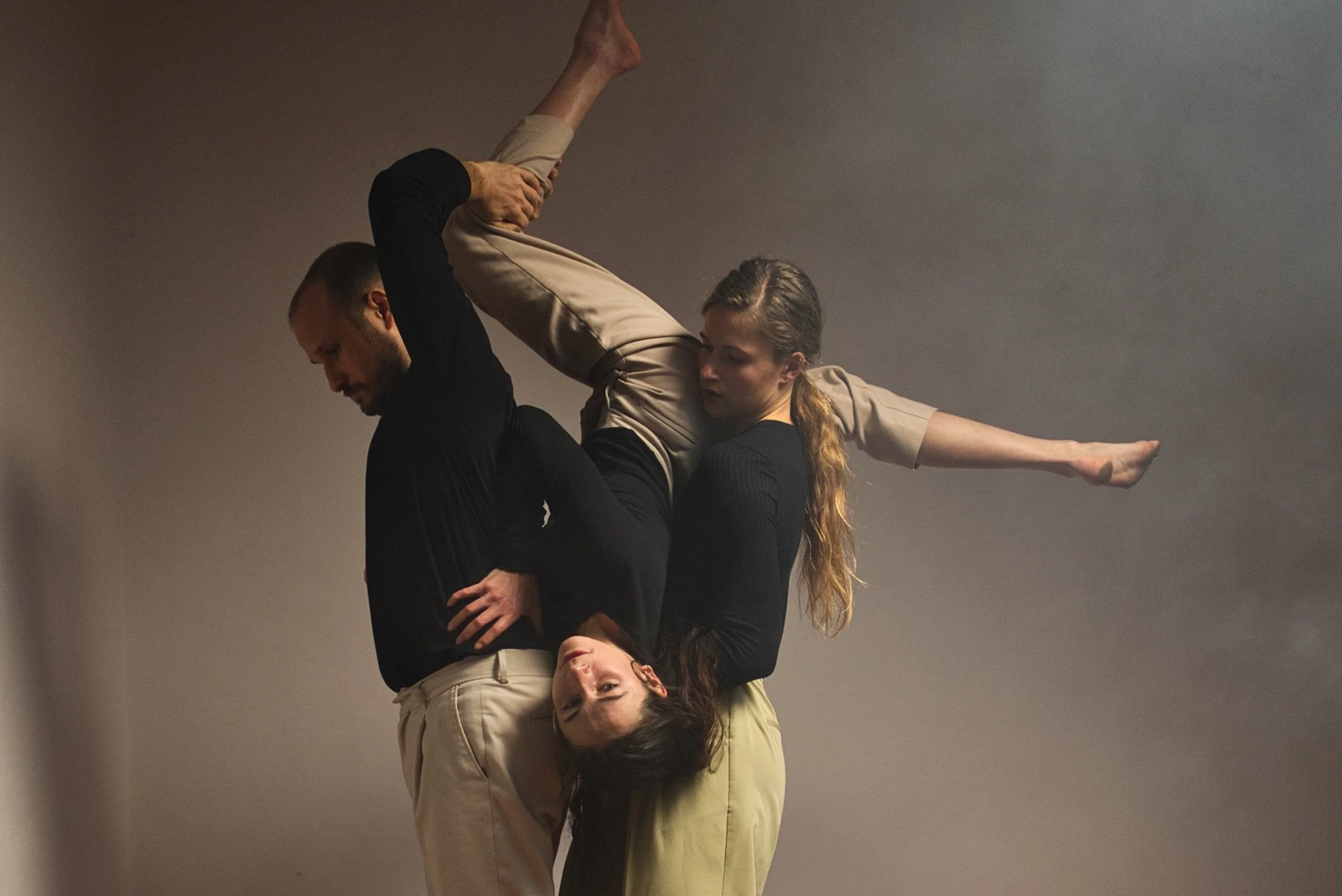The world population is growing, which calls for questions such as: where exactly does the freedom (space) of one meet the freedom (space) of another? How large is the space in which a subject can settle, occupy it, and in which they decide, invent, think, are?
Photo by Yari Stepanov
The human tendency to expand into space—to occupy, conquer, and push the boundaries of one's own freedom—is often disguised as a natural impulse or a necessity for survival. Yet, behind this urge often lies the illusion that freedom exists only when a space is completely under our control. Vulneri is not merely an observation of physical crowding, but a symptom of an ideological paradigm: the assumption that a surplus of others automatically means a deficit of freedom.
Dates:
6 September 2025, MOSTE OPEN 2025, Ljubljana
7 Semptember 2025, 4UKREP, Plesni Teater, Ljubljana
Credits:
Anamaria Klajnšček – Dance and Choreography
Beno Novak – Dance
Kristyna Pedlova – Dance
Gabriela Lotaif – Costume Design
Aljaž Zaletel – Lighting Design
Living in a society, in the world, means constantly sharing space with others. Freedom, then, is not an area of arbitrariness and endless horizons, but is rather confined precisely by the other who inhabits the same limited space. Meanwhile, the world population is growing, which calls for questions such as: where exactly does the freedom (space) of one meet the freedom (space) of another? How large is the space in which a subject can settle, occupy it, and in which they decide, invent, think, are?
In her work Vulneri, Anamaria Klajnšček tackles this question on a physical, material level—she places three dancers into one cubic meter of space. There they cohabitate, coexist, they share this space, and yet always, precisely within this limitation, they search for freedom. The author introduces into this space techniques of movement, dance, and other somatic practices that she has been developing for the last seven years: acrobatic circus, acroyoga, contact, the collaboration of bodies, and the exchange of roles between them.
The cohabitation of subjects in an extremely small space de-abstracts the concept of freedom. The boundaries between the freedom of one body and another are here perfectly clear, tactile. While terror, subjugation, and the imperialist expropriation of space and freedom are always an option, as is known from social history (and the present), the dancers in Vulneri point to another real possibility, namely that of sensibility and solidarity. This, however, calls for a full understanding of the concept of cohabitation. Here, it does not mean a structure composed of autonomous bodies that imagine freedom and even insatiably appropriate space, but rather it necessarily demands a delicacy of movement (that is, of thought), a plasticity of bodies (that is, of thought), and cooperation between bodies. Because if two of the three fail in this one cubic meter of space, if the forces of power relations destroy them, the third is simply left alone. But does being alone even still contain the concept of freedom?
